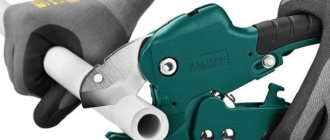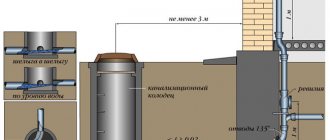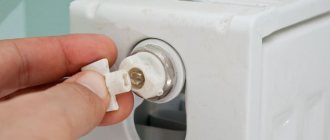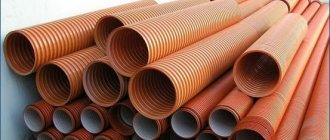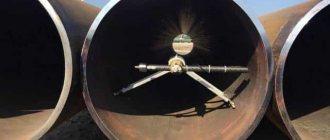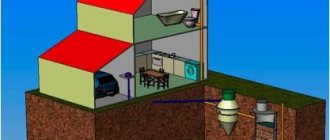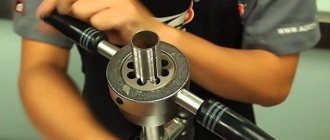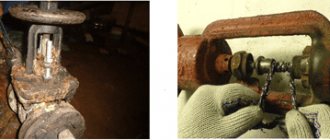Today, a common material when creating heating, plumbing or sewer systems is plastic. It is very convenient to use pipes from it. They have many advantages over analogues made from other materials.
When installing plastic pipes, no complex equipment is used. This greatly simplifies the installation process. However, correct adjustment of different elements to the required dimensions can only be done using a cutter for PVC sewer pipes. You need to know how to choose this tool correctly.
Sewer plastic pipes
The use of cutters for cutting plastic blanks is becoming increasingly popular. Since most consumers today choose this material. Without a high-quality cutter, it is quite difficult to cope with the installation of the system.
PN20 plastic pipes are in particular demand. This is a universal product. It is used for the installation of sewerage systems, as well as cold and hot water supply. The water temperature in it should not be more than eighty degrees. The operating pressure indicator can be 2 MPa. There are four types of cutters that can be used to cut these pipes. Each of them has its own advantages and disadvantages.
Today you can buy pipe cutters for plastic pipes of the following types:
- roller;
- guillotine;
- scissors;
- rechargeable.
Below you will find out detailed information about each tool from the list.
Outdoor system installation
Installation of sewerage from plastic pipes outside the building is carried out, in most cases, inside an earthen trench. This is due to:
- the need to protect the plastic sewer structure from exposure to negative temperatures;
- rational use of the surface of the earthen area; protection from possible mechanical damage.
Installation of sewerage systems outside the trench is carried out:
- in the presence of high groundwater levels (wetlands);
- rocky or frozen soil (permafrost);
- other technical limitations.
Installation of sewer pipes on the site is carried out mainly in the warm season. This makes it easier to install sewer pipes - a more comfortable climate and the presence of thawed ground.
Products for external use - red pipes, are made of polymers. Parts can be cut or trimmed in the same ways as for structures for internal use. Installation of sewer plastic pipes is carried out on our own or with the involvement of a third party.
The method - how to cut the parts when installing sewer pipes indoors or outside the building, it is advisable to think about it in advance, before starting work. Otherwise, you may not have the necessary device or tool at hand, which will significantly complicate the process of installing the highway.
Source: hemkor.ru
Roller cutter
Before fixing the pipeline to the walls and installing its individual sections into a single system, you need to trim the workpieces to the appropriate size.
Use the roller cutter carefully. Consider some features of using a pipe cutter:
- the workpiece must be rolled between wide rollers and the cutting part;
- the cut is smooth, so when installing pipes there is no damage to the rubber sealing ring;
- The procedure for cutting workpieces using this cutter takes quite a lot of time.
A roller cutter is necessary when cutting large size sewer pipes. The tool is used when working with pipes with a diameter from 50 to 110 mm.
Cutting is performed in a certain sequence. Immediately you need to mark the place of the cut. Unscrew the screw and move the bracket to the cutting area. To secure the clamp, you need to slowly rotate the screw. However, you should not put in excessive effort. Otherwise, the pipe may be damaged. Next, rotate the cutter around the workpiece. After a few minutes, parts of the product will separate.
Design and principle of operation
One of the requirements for pipelines is the reliable connection of its individual elements. It is possible to make a high-quality joining only if there are even cuts. An ordinary tool such as a grinder or a hacksaw cannot cope with this task. Therefore, you should get a pipe cutter.
Devices for cutting pipes are available in different designs, but according to the principle of operation they are divided into two types.
Orbital cutting
The part is fixed in a vice or on a machine, which ensures complete immobility. The cutting elements of the tool cover it and rotate.
Thanks to this, the cutter moves in a circle, simultaneously forming a deep furrow. A prerequisite for the functioning of the orbital device is the presence of space for it to go around the pipe.
Cutting with a fixed pipe cutter
The tool in this case is installed permanently. The part being cut rotates around it. For these purposes, a special machine is used. This method is mainly applicable for mass production of pipe material. The method is also suitable for cutting large diameter pipes.
Find out: how to choose hand shears for metal.
Taking into account the design features of each type, we can draw a conclusion about the design of the pipe cutter. The tool is a body with a built-in mechanism and a place for gripping and fixing pipes.
The body is most often made in the form of a clamp, on the opposite side of which there is a cutting element. The cutter ensures that the part being cut is pressed against the body and the measured fragment is cut off. The principle of operation of a pipe cutter is based on this.
Guillotine pipe cutter
A mechanism operating on the guillotine principle is well suited for trimming plastic blanks. This cutter is used for cutting products with a diameter of fifty to seventy millimeters.
To make a cut:
- Apply a mark to the location of the future cut.
- Extend the handle of the device and grasp the workpiece.
- Close the handles and touch the cutting element to the mark.
- Press down on the cutter handles so that the cutting component passes around the entire perimeter of the workpiece.
The cut must be done efficiently. To solve this problem, make a serious physical effort. This will make the cut even. The guillotine has one drawback. When using it, there is a possibility of deformation of the pipe along the internal diameter. But this happens extremely rarely.
Overall, this tool is great for cutting medium to large diameter sewer pipes. The operation of the guillotine is convenient and simple. Even an inexperienced master can operate the tool.
Briefly about the drainage system
The sewerage system is a description of all components and the principle of operation of the system as a whole and for individual units. Subdivided:
- Internal – located in the building.
- External - laid outside buildings.
Internal
Internal sewage system:
- Plumbing fixtures (sources of dirty water): toilet, bidet, washbasin (kitchen sink), bath (shower), washing machine and dishwasher.
- Siphons and connection elements (transition couplings).
- Outlet pipes Ø 30–50mm. For toilet 100mm.
- Transition elements: fittings and couplings, check valve, revision.
- The main riser is an element that collects wastewater from all sources into one sewer pipe. The collector diameter should not be less than 100mm.
Installation of a sewage system indoors is regulated by regulatory documents: SNiP (Sanitary Norms and Rules) 3.05.01–85 “Internal sanitary systems.”
Outdoor
The external system includes:
- Sewage line made of pipes Ø 100–200 mm (for individual housing).
- Overflow (inspection) wells.
- Couplings, fittings.
- Wastewater receiver (cesspool, septic tank, biotreatment station).
The installation of sewerage outside the building is regulated by SNiP 2.04.03–85 “Sewerage. External networks and structures."
Scissors
This type of cutter is popular. It is used for cutting pipes of small diameters. The operation of this tool has the following features:
- the cutting part of the pipe cutter in many models has a special rail, which greatly facilitates the procedure;
- you can work with scissors with only one hand, with the other you can perform other manipulations;
- when installing water supply systems, you can quickly get tired if you spend a long time cutting workpieces, since solving the problem requires significant physical effort;
- select scissors carefully; low-quality models tend to break after two hours of work.
If the workpiece was damaged during facing, remove this area. Otherwise, you will not be able to create a tight connection. The tool is used for pipeline repair purposes. Using it, you can quickly remove the damaged part and replace it with a whole pipe.
Cutting with scissors is performed according to the following rules:
- Place a mark on the location of the future cut.
- Place the main blade over the marker mark. For precise positioning of scissors, use a special slot.
- Press the handles to carefully cut into the pipes. Next, increase your efforts.
- Do not make sudden movements with your hand while working. This will cause the cutting component to jump off the guide. As a result, you will have to start all over again.
- Place the base blade accurately. It should be tightly to the workpiece.
Cutting technique
Self-cutting can be carried out with products with a diameter of 5 to 30 cm. So, if the product does not fall within these boundaries, it is best to turn to professionals.
When carrying out any such manipulations, it is important to remember the basic rules:
- Metal-plastic products are very sensitive to temperature, so some problems may arise in hot or cold weather. The material shrinks and expands easily, making it difficult to determine the true dimensions.
- Metal-plastic, like polypropylene pipes, can be cut with any available means. But in order to avoid various negative consequences, it is best to do this with special tools.
- An excellent tool is a special self-sharpening knife. But if you plan to carry out work to replace one section with another, it is better to abandon the tool in favor of scissors.
- The material is quite fragile. Applying too much force can result in cracks or specific deformations. The permissible load can be seen in the product passport, which was issued at the time of installation of the water supply system.
- The type of cutting directly depends on the proportion of metal and plastic in the product. If there is more metal, then when cutting there should be as little friction as possible. Otherwise, a large proportion of plastic means a higher intensity of work with high friction.
- Before starting work, you must make sure that there is no water or gas flowing through the pipe. You need to turn off all the taps and wait a little.
- After completing the work, you need to thoroughly clean the inside of any debris that could lead to blockages or break specialized equipment.
The use of electronic cutting tools is not considered reasonable, since the specific material is not designed for this. You can do it manually.
Source: znatoktepla.ru
Cordless cutter
This is a convenient tool for cutting pipes. Among its features we highlight:
- The product is similar to pipe cutters, but is equipped with an electric motor and a battery.
- Operation of the tool is convenient and simple. Using it, you can quickly cut a huge number of PVC pipes. On average, one cut takes about seven seconds.
- The cutter can only be used for workpieces with a small diameter.
- The operation of the cutter must fully comply with safety regulations. This will prevent accidents from occurring.
For cutting small diameter pipes, this will be the best choice. Note that if we are talking about installing a sewer system, this pipe cutter is unlikely to be useful. The maximum diameter of the pipe that it can cut is forty-two millimeters.
Top 4 cutters for plastic pipes
There are many models of pipe cutters. Below we will look at the highest quality and most convenient options for each type of cutter. We selected the following models for review:
- scissors Rothenberger Rocut TC 75 Professional;
- guillotine Rothenberger ROCUT XL 125;
- roller pipe cutter RIDGID 154-P;
- Milwaukee C12 PPC-0 cordless cutter.
When selecting, pay attention to the range of working diameters. In some cases, it will be more rational to purchase a universal model. But if you need to work with a specific size of workpiece, it makes sense to choose a pipe cutter specifically for it.
Scissors Rothenberger Rocut TC 75 Professional
This model of plastic pipe scissors is one of the best. It is suitable for cutting workpieces with a diameter of up to seventy-five millimeters. The tool is manufactured by the German company Rothenberger. If you need quality scissors for long-term use, this scissor model will be a good choice.
The blades of the tool are made of hardened Solingen steel. They produce straight cuts on all types of plastic pipes. The blade tip has a V-shaped section. Thanks to the wide support for the workpiece, cutting at right angles is very accurate. In this case, there is no deformation of the cut product.
The design of the scissors body is durable. The material used is aluminum. Unlike other models, cutting workpieces requires little physical effort. The design has a button for opening the scissors. The tool is comfortable to grip thanks to the rubberized handle.
The operation of the scissors is convenient and durable. German quality speaks for itself. Perhaps the only disadvantage of this model is the high price. But if you want to use a truly reliable and convenient tool, we recommend purchasing this model of scissors.
Hand tools
Guillotine pipe cutter
The simplest design option for scissors is the guillotine design. This tool can be mechanical or electrically driven. Electric models are professional tools needed when regularly performing large volumes of work.
In addition, guillotine pipe cutters are divided into tabletop and manual models.
Tabletop (floor) pipe cutter
The design of a tabletop (floor) pipe cutter is a kind of frame, inside of which a movable blade is installed, progressively moving vertically. It is activated by the rotation of the upper handle or flywheel, and is lowered at a right angle onto the pipe placed in the saddle of the lower part of the frame, making a perfectly straight cut.
Tabletop guillotine pipe cutter
When lowering the blade, the load from it is evenly distributed over the surface of the pipe, which ensures an even, burr-free cut, while maintaining the correct cross-sectional shape of the product. Since the polypropylene walls are not deformed when the blade is applied to the pipe, the end does not require additional processing. The cut section is ready for butt welding using a coupling or other mounting part or fitting.
Benchtop pipe cutters are typically designed to work across a wide range of plastic pipe diameters. They are used when installing any pipelines - water supply, heating, sewer. There are devices designed for very large diameters, and they are not tabletop, but stationary floor-mounted, and are usually used only in industrial settings.
The disadvantage of this type of pipe cutter is that the speed of work is not very high. This is understandable - before each next cut, the blade must be returned to its original position, which requires turning the rod.
Prices for pipe cutters
pipe cutter
Manual guillotine pipe cutters
These tools have a scissor-like design and are designed to cut pipes up to 70mm in diameter.
The advantages of manual guillotine cutters are their compact size, ease of storage and operation, and high speed of cutting operations. In addition, the dimensions of the tool allow it to be used in limited spaces, which is often the case in plumbing installations.
Manual guillotine pipe cutter
Guillotine shears also have plenty of disadvantages. These are hand fatigue during a large volume of work, the high cost of replacement blades, deformation of the walls during cutting, the presence on the market of a large number of low-quality products that will fail after several cuts, and limited pipe diameter.
The logical conclusion is that this type of pipe cutter is well suited for performing small amounts of work when installing pipes of small diameters.
The process of working with a manual guillotine pipe cutter is practically no different from using conventional scissors. True, there are also some peculiarities:
It is best to mark the pipe with a marker of a contrasting color
- The first step is to make a mark on the pipe along which the cut will be made.
- Next, the pipe is laid on the wide base of the tool so that the mark left on the pipe is located exactly under the blade of the knife located on the other side of the scissors.
- Then you need to press down on the handle, which will lower the blade onto the pipe, and apply full compression until the cut is made.
- And finally, the force is removed from the handles, the tool returns to its original position.
Simple, but not convenient enough.
Ratchet pipe cutter
Scissors with a ratchet mechanism are equipped with a toothed sector and an intermediate position lock. Thanks to this design, the knife gradually lowers onto the pipe being cut.
When force is applied to the handles, the blade does not move like a scissors until it is fully aligned with the base for the pipe, but only to a certain angle, and is fixed in this position. The click of the ratchet mechanism indicates that you can release the handles of the pipe cutter - they themselves will move back to their original position position under the action of a spring. Then, from this position, the most convenient for applying force, another press is made, which also causes the blade to shift - and so on until the cut is completed.
Ratchet shears for cutting polypropylene pipes
Unlike the guillotine version of scissors, ratchet pipe cutters have not only a different mechanism of action, but also a blade of a different shape. The lower part of the tool, that is, the stop for placing the workpiece, is similar, that is, it is given a semicircular shape, convenient for laying pipes of different diameters.
Thanks to the ratchet mechanism, cutting is much easier, so your hand gets less tired.
The disadvantage of a ratchet cutting device is the likelihood of jamming the polypropylene walls and possible bevel of the cut.
Using this tool requires some skill. The main difficulty lies in the ability to hold it in the correct position so that the blade is positioned exactly perpendicular to the pipe being cut. Otherwise, the cuts will turn out oblique and will have to be further processed. If the pipe cutter jams the pipe (for example, due to insufficient blade sharpness), then after cutting it will have to be straightened from the inside using a calibrator.
Pistol pipe cutter - with this tool it becomes much easier to correctly install the pipe under the knife
This type of cutting product also includes pistol pipe cutters equipped with a ratchet (ratchet) mechanism. This tool is easier to handle, and the cut with it is more accurate and even. Returning the blade to its original position in this design is carried out by pressing a button, which activates the spring. The pistol variety is well suited for cutting pipes with hard or thicker walls. But the cost of such pipe cutters is significantly higher.
Planetary type pipe cutters
Roller pipe cutters
This type of pipe cutter is a planetary type tool. It differs in both design and operating principle. Similar products are produced in a specific range of sizes and are designed for cutting pipes of different diameters.
Externally, the roller pipe cutter cannot be confused with any other because of its characteristic shape.
Roller pipe cutter – provides a very accurate and even cut of the workpiece
The design of a roller pipe cutter consists of the following parts:
- The body is made in the form of a hook.
- The movable handle, which is also a clamping mechanism, can be lowered and raised, depending on the diameter of the pipe being cut.
- At the end of the clamping part there is a cutting blade in the shape of a wheel (roller).
- At the bottom of the hook bend there is one or more movable rollers against which the wall of the pipe being cut will rest.
- Some models are additionally equipped with a cutter that chamfers the cut end of the pipe.
Cutting a pipe using a similar tool is carried out as follows:
- The pipe is laid on movable rollers, inside the lower part of the hook. The cutting mark placed on it should be in the center
- The handle with the disk blade should be lowered to the surface of the pipe - the position of the workpiece is adjusted - precise alignment of the applied mark with the blade. After this, the blade is pressed all the way.
- Next, you need to grab one free end of the pipe and twist it a full turn inside the tool. If a very long section is being cut, or for other reasons it is simply impossible to rotate the pipe, then the pipe cutter itself is rotated 360 degrees around the pipe.
- Having made the first pass, the blade should be lowered down using the handle a few more millimeters.
- Then the operation is repeated. The roller blade will not move anywhere and will pass exactly along the groove left on the surface of the pipe.
- Such passes are repeated until the pipe is completely cut off. Their number will depend on the thickness of the polypropylene wall and the sharpness of the blade.
If you use the tool correctly, accurately holding the blade on the mark, the cut will be perfectly straight. The main thing is to make the first furrow accurately - the next passes will be easier to make.
When working, you should remember that you should not immediately press the blade against the surface of the pipe very strongly, since microcracks may form along the edge of the cut, which will reduce the strength of this section of the product, so chips may appear at the end of the pipe. When making cuts, you should not rush - all turns should be smooth. This is especially important to consider when cutting products with large diameters or thick walls.
In terms of evenness of the cut, the planetary roller device is comparable to the stationary guillotine version of the pipe cutter, but working with it is much faster. However, the cost of this tool is higher.
The advantage of a roller pipe cutter is that there is no application of strong starting pressure on a local section of the plastic pipe wall. The cut is made evenly in a circle, which means that the blade will not crush the pipe even if it has thin walls.
Chain pipe cutter
A pipe cutter with a chain mechanism also belongs to planetary tools. It can be used to cut pipes in a wide range of diameters, so it can be called a very practical tool, especially for those craftsmen who are constantly involved in the installation of various piping systems. At the same time, such a pipe cutter has a considerable cost, so not everyone can decide to purchase it.
The design of chain pipe cutters may vary, but the most common option is a model that looks like pliers with a chain attached to the ends. The chain links are connected to each other by hinges, on the axes of which there are rollers that act as cutters.
Design of a chain pipe cutter designed for cutting workpieces with a diameter of 25 to 85 mm
In most cases, the chain is non-separable, so if one of the hinges breaks, it will have to be replaced completely, since this structural element is initially a consumable item.
Prices for chain pipe cutter
chain pipe cutter
As a rule, this type of pipe cutter is used for cutting not only polypropylene, but also copper and steel pipes. Therefore, the tool can be called universal.
Pipe cutting with such a tool is carried out in the following order:
- A pipe is inserted into the circle formed by the chain and positioned according to the cut mark.
- The chain is then tightened on it using the T-handle on the top handle.
- After this, you need to grab the handles of the tool, apply a bringing force, and then perform several arc movements up and down relative to the axis of the pipe. Since several roller cutters are involved in the cutting process, there is no need to rotate the tool completely 360 degrees.
- If you need to cut a pipe that is already installed in the system, you need to unfasten the chain from one side of the pliers. Then wrap it around the pipe and secure it again in its original position. Then pull the chain to the pipe with the flywheel and carry out several cutting movements, as far as space allows. Even in tight conditions, the result is guaranteed, with high cutting precision.
Chain pipe cutters are divided into two types according to the fastening of the cutting elements:
- Movable incisors. In these models, the rollers simultaneously act as hinges and cutters. That is, during the cutting process they rotate - the cutting edges do not wear out so quickly
- Fixed cutting elements are rigidly mounted on the axes of the hinge joints of the chain and remain in one position during the pipe cutting process. It is clear that such edges will dull faster.
The advantages of pipe cutters with chain mechanisms include the following:
- Fast cutting of products due to numerous cutting elements simultaneously acting circumferentially on the pipe wall.
- Five chain links form an overlapping cutting angle of only 72 degrees, which allows this type of tool to be used in confined spaces.
- There is virtually no risk of deformation of the pipe walls due to the fact that the cut occurs at several points at once.
- Pipe cutters of this type can cut products with different diameters in a fairly wide range.
- The output is a perfectly even cut, without the formation of burrs.
The disadvantage of a chain pipe cutter is its high price. By the way, this circumstance encourages some craftsmen to make such an instrument on their own.
Video: Homemade chain pipe cutter
Electric pipe cutters for polypropylene pipes
The presence of an electric drive in the tool significantly speeds up and facilitates both installation and dismantling work when creating, repairing or modernizing water supply, heating or sewerage systems. At the moment, there are several types of electrical appliances:
- A tool that, in principle, copies the design of the roller and guillotine mechanism of a pipe cutter, but with force transmission from an electric drive.
- Power saws.
- Stationary equipment used in industrial settings. Such devices are universal, as they are suitable for cutting products from different materials.
To understand what electric tools are, they need to be examined in detail.
Reciprocating electric saw
Reciprocating electric saws are versatile and are used for cutting many materials, including pipes. Such a tool usually has a convenient configuration with handles that provide a secure and comfortable hold. A serrated blade is installed in front, which performs reciprocating movements when performing work. The length of the cutting blade, its width, and the pitch of the teeth are selected depending on the material to be cut. For plastic pipes, blades with fine teeth without wide routing are most often used.
A reciprocating saw can also be used as a pipe cutter. This is especially true for large diameter plastic pipes.
The design of some models of the device may include a C-shaped or chain clamping mechanism, which is designed to fix the pipe in the required position. It is attached to the saw body with a specially designed mount.
The advantages of this tool include the following:
- High productivity of work.
- Ability to cut pipes of various diameters.
- Affordable cost of replacement blades.
- Long service life of the device.
- The price of household models of electric saws is comparable to the cost of professional guillotine pipe cutters, but the functionality is incomparably higher.
The disadvantages of using a reciprocating saw as a pipe cutter include the following:
- Energy dependence. To perform the work, a source of electricity is required. Or a model equipped with a battery.
- A cut made with this tool requires additional processing using a chamfer or trimmer.
- It is difficult to make a perfectly perpendicular cut with a reciprocating tool if there is no clamping device or the pipe is not firmly fixed in a vice.
In a word, it is clear that purchasing a reciprocating saw solely for cutting pipes is hardly reasonable. Another thing is that if you already have it in your home “arsenal,” then you can do without purchasing a pipe cutter.
Guillotine and roller electric pipe cutters
Electric pipe cutters of the guillotine and roller type should rightfully be classified as narrow-profile professional tools. They have all the qualities of mechanical tools of the same design, but their price is much higher than the latter. Therefore, it is rational to purchase such power tools only in cases where the master works with pipes on an ongoing basis.
Electric roller pipe cutter.
Electric pipe cutters are similar to their mechanical counterparts only in operating principle, but have a more complex design. By the way, there are different options; they require connection to a regular 220-volt power supply; others run on a battery. This allows them to be used both at home and in conditions where there is no power supply. The battery charge lasts for one to two hours of uninterrupted operation. And since pipe cutting alternates with their installation, one charge can be enough for an entire shift. Convenient in conditions of construction on an uninhabited site.
Electric pipe cutters, by the way, can be used for cutting not only polymer, but also metal pipes.
Industrial pipe cutters
Industrial devices can have different designs and are used for all sizes of pipes, as they adapt to any diameter.
Depending on the design features, industrial pipe cutters are divided into electric, hydraulic, and pneumatic. Many of them are equipped with an automatic control system.
The equipment is intended for pipe cutting on an industrial scale, so it is irrational to consider it for home use. It has not only a high cost, but also quite large sizes.
Guillotine Rothenberger ROCUT XL 125
The cutter is manufactured by the same manufacturer as the previous model. Suitable for use in any part of the pipeline. The blade has a V-shape, which facilitates the process of cutting workpieces. It is made of alloy steel. The cutting edge angle is optimized, making the tool even easier to use.
The lower clamping device of the guillotine cutter is convenient. It folds completely. Therefore, you can use this pipe cutter even in cramped trench conditions. The model is suitable for cutting pipes with a diameter of up to one hundred and twenty-five millimeters. Can be used to work with workpieces made of all types of plastic.
The tool has proven itself well. Among models of a similar type, it stands out due to its versatility and ease of use. Blade replacement is quick and efficient. If you decide to opt for a guillotine-type cutter, this option will be the most optimal.
What you need to know when choosing
Watch the video
If you decide to purchase scissors, then consider the following important points:
- blade feature. It is desirable that it be made of stainless steel, and the sharpening angle is 30 degrees;
- handle with rubber inserts for comfortable use. Before purchasing, you should compare with other types and make sure that the handle fits comfortably in the palm of your hand and is the perfect size;
- a wide and strong base so that the knee is securely fastened, otherwise the result will be an uneven cut;
- weight - everything is simple here, the lower the weight, the easier it is to carry out the work;
- It is desirable that the return of the cutting rail and support be automatic by a spring. Otherwise, you will need to manually return these elements to the open state.
Also, before making a purchase, it is recommended to determine the diameter and length of the pipeline, then make your choice based on this.
Roller pipe cutter RIDGID 154-P
The tool is manufactured by the American company RIDGID Tools. Pipe cutters are the key products of the manufacturer. The model in question is suitable for cutting workpieces with a diameter of 50 to 110 millimeters.
This tool has a fast feed mechanism for the cutting roller. It returns to its initial position in a second. This saves time when doing a lot of work.
Adjustment to a specific workpiece diameter occurs quickly. The handle has space for a spare roller. You don't need to spend a lot of time replacing the cutting element. The roller is made of alloy steel. It is characterized by a long service life.
The X-CEL handle is ergonomic. Therefore, when using the tool, your hands do not get tired quickly. Overall, the model is practical to use and easy to maintain. It is ideal for professional use.
Bulgarian
More financially secure plumbers carry a small grinder. I'm not talking about Bosh, I'm talking about some cheaper one. Now I will set it up for myself. And accordingly we cut the pipe.
The method is faster than the first one. Using it results in smoother edges. This, of course, also depends on where the hands of the one who is sawing are from, but the edges turn out to be smoother.
There is one drawback compared to the first method - it is a chamfer. The chamfer ends up with such burrs, and these edges have to be processed additionally. Well, that'll do. But the grinder becomes overgrown with such cobwebs, chacha, and it is quite difficult to clean it.
Milwaukee C12 PPC-0 Cordless Cutter
The model is produced by the American company Milwaukee Electric Tool, specializing in the manufacture of professional tools. The cutter is suitable for working with pipes with a diameter of up to fifty millimeters. When cutting workpieces, strong pressure is created. Therefore, working with the tool is easy. It takes three seconds to cut a PVC pipe of the maximum diameter allowed for this pipe cutter. The gear housing and gears are made of durable metal. Due to this, maximum torque is achieved.
The cutting speed can be adjusted. The device is equipped with a good battery. One charge is enough to make two hundred cuts. The battery is reliable. It is characterized by a long service life. For small diameter pipes, this tool will be the best choice. If you do not want to buy a pipe cutter for each size of workpiece, stop choosing more universal models.
Watch the video:
Hacksaw
The first is a hacksaw. When they come to some object with a pipe and a hacksaw, they do this.
The result is straight edges. And when a pipe is inserted into a pipe, this rubber band is bitten on the edge, so plumbers have to do an additional operation, namely chamfering. This is done either with a knife, respectively, or the pipe simply rubs against the concrete, and a chamfer is obtained.
Why is this method good? It's a small instrument, relatively small. Although we see that ours is quite large and long, and without protection it cannot be moved. Well, if you want to round the edges, you will need a knife.
